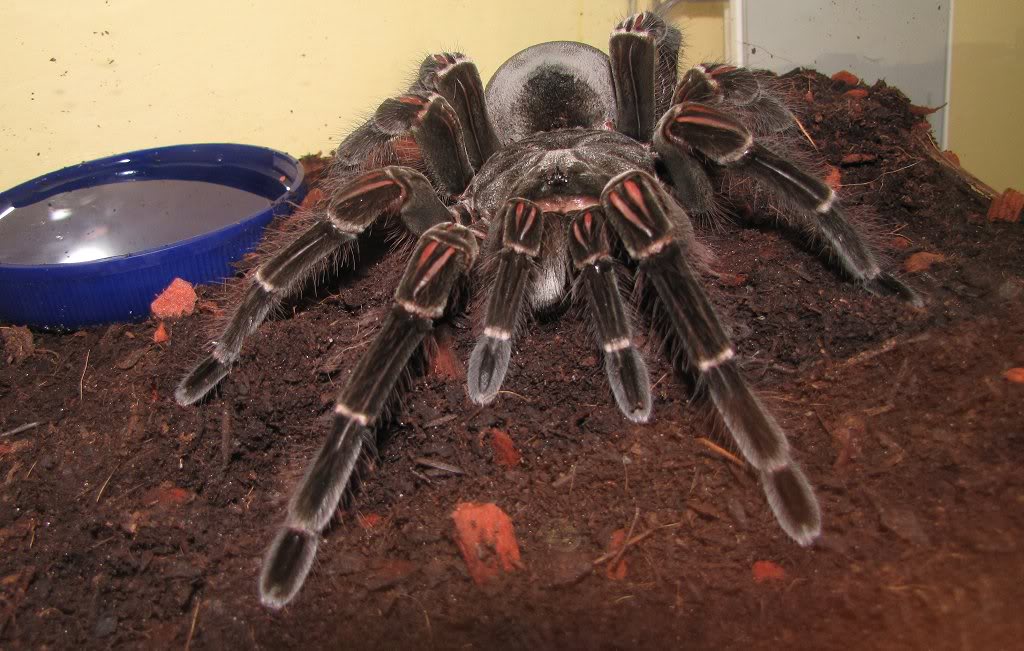The Enigmatic World Of The Largest Spider Ever
Imagine stumbling upon a creature that can make even the most seasoned arachnophobe shudder. The largest spider ever recorded is a marvel of nature that evokes both fear and fascination. Spiders, often viewed as creepy crawlies lurking in the corners of our homes, can reach astonishing sizes that challenge our understanding of the animal kingdom. From their unique adaptations to their habitats, the largest spiders offer a glimpse into the diverse world of arachnids.
In this article, we will delve into the details of the largest spider ever discovered, exploring its characteristics, habitat, and the myths surrounding it. We will also answer some common questions regarding this enormous creature, shedding light on its behavior, diet, and role in the ecosystem. Prepare to be amazed as we uncover the truth about these giant arachnids that evoke a mix of awe and fear.
Whether you are a spider enthusiast or simply curious about the natural world, understanding the largest spider ever will broaden your perspective on these fascinating creatures. Join us as we explore the depths of the spider’s world and unveil the secrets of the largest spider ever recorded.
What is the Largest Spider Ever Recorded?
The title of the largest spider ever goes to the Goliath birdeater (Theraphosa blondi), a species of tarantula native to the rainforests of South America. This impressive arachnid can reach a leg span of up to 12 inches (30 centimeters) and weigh over 3 ounces (85 grams). The Goliath birdeater is not only massive but also has a distinct appearance, with a hairy body that can be intimidating to anyone who comes across it.
Where Can You Find the Largest Spider Ever?
The Goliath birdeater is predominantly found in the tropical rainforests of northern South America, particularly in countries like Brazil, Suriname, and Guyana. This spider prefers a humid environment with abundant vegetation, which provides both shelter and hunting grounds.
What Does the Largest Spider Ever Eat?
Despite its name, the Goliath birdeater is not known for hunting birds. Instead, its diet primarily consists of insects, small mammals, and amphibians. It uses its powerful fangs to subdue its prey, delivering venom that helps to immobilize its catch. The Goliath birdeater has even been known to consume small snakes and frogs, showcasing its adaptability as a predator.
How Does the Largest Spider Ever Defend Itself?
The Goliath birdeater has several defense mechanisms to protect itself from predators. One of its most notable features is its ability to release irritating hairs from its abdomen. These hairs can cause discomfort and irritation to potential threats, giving the spider a chance to escape. Additionally, the Goliath birdeater can also adopt a defensive posture, raising its front legs and displaying its size to intimidate attackers.
What are the Myths Surrounding the Largest Spider Ever?
Many myths and misconceptions surround the Goliath birdeater and other large spiders. One common myth is that these spiders are aggressive towards humans. In reality, Goliath birdeaters are generally shy and prefer to retreat when confronted. Another myth is that they are capable of eating birds, which has been largely debunked by researchers who have observed their feeding habits.
How Do Scientists Study the Largest Spider Ever?
Scientists study the Goliath birdeater and other large spiders using various methods, including field observations, trapping, and genetic analysis. Researchers often conduct their studies in the spider's natural habitat to gain insights into their behavior, reproductive patterns, and ecological roles. These studies help to enhance our understanding of arachnids and their importance in maintaining healthy ecosystems.
What is the Significance of the Largest Spider Ever in Ecosystems?
The Goliath birdeater plays a crucial role in its ecosystem as a predator. By controlling the population of insects and other small animals, this spider helps maintain a balanced food web. Additionally, as a prey item for larger animals, the Goliath birdeater is an integral part of the food chain, contributing to the biodiversity of its habitat.
How Can We Protect the Habitat of the Largest Spider Ever?
Conservation efforts are essential to protect the Goliath birdeater and its habitat from deforestation and climate change. Here are some ways we can contribute to their protection:
- Support sustainable forestry practices that minimize habitat destruction.
- Participate in conservation programs focused on preserving rainforests.
- Raise awareness about the importance of arachnids in ecosystems.
- Advocate for policies that protect endangered species and their habitats.
Conclusion: What Can We Learn from the Largest Spider Ever?
The Goliath birdeater, the largest spider ever recorded, teaches us valuable lessons about the complexity and diversity of life on Earth. By understanding these fascinating creatures, we can appreciate the delicate balance of ecosystems and the importance of preserving our natural world. As we continue to study and learn from the Goliath birdeater, we can ensure that future generations will have the opportunity to marvel at the wonders of nature, including the largest spider ever.
Article Recommendations
/close-up-of-spider-on-hand-699166199-5b42059bc9e77c0037034a69.jpg)

